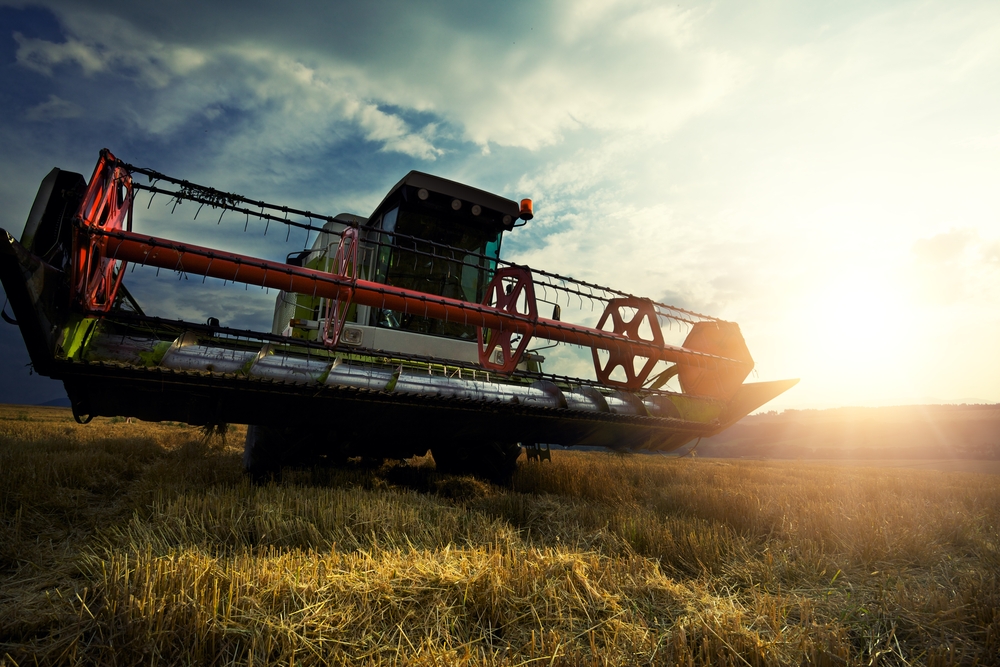The Beauty of Technology

I used to absolutely HATE spraying, especially broadcast spraying over an entire field. The problem is seeing the borders of where you have already sprayed.
In the old days, you drug a marker disc or shank on the end of the boom that physically dug up the plants or smashed them down so you could tell where you had been. Sometimes you could see the line, sometimes you could not. You spent most of your day praying that you were somewhere close to the right line, knowing that you might be overlapping and wasting chemical (and money) or leaving a gap where the weeds would grow up and demonstrate your incompetence.
Then came the foam marker systems. These used a small air compressor and a special highly-foaming and long-lasting soap to generate blobs of foam at the end of your spray boom. It is the stuff kids wished was in their bubble toys. The foam was supposed to sit on top of the plant canopy until you went around the field again, giving you something to follow on your next pass. Sometimes it worked, sometimes it fell to the ground where you could not see it, or it would dry out and disappear before you made the next round. One time my neighbor actually saw a coyote walking down his track from the previous pass, licking up the foam. Foam was better and less physically destructive than the old disc markers, but I still knew that I really didn’t know where I was in the field in relation to where I should have been.
It’s the “if you don’t know where you are then you can not possibly be doing a good job” that I found so frustrating. Knowing I was doing a poor job was what made me hate spraying.
Finally, military GPS technology moved into the consumer market, and agriculture quickly became one of the top users of satellite GPS technology. It is now either optional or standard equipment on all new field tractors and combines. Spraying season, however, is where it has truly blessed my life.
My main sprayer is an older, small 4x4 pickup that has had the bed removed and a 150 gallon tank and pump bolted on in its place. I spent about $3,500 to add GPS guidance to it, and it was worth every dime. The guidance system allows me to see within a few inches whether I am overlapping or leaving a gap. It also tells me which parts of the field have already been sprayed.
This technology was seen as such an environmental and energy-saving benefit, that government cost-share programs were developed to encourage farmers to buy new equipment with satellite guidance. I have a few colleagues who took advantage of this, but the technology was such a benefit that it was widely adopted even without the cost-sharing option.
In operation, it is a lot like driving Mario cart or any other computer racing game. The screen shows a line where you need to drive and you must keep your ‘cart’ (which is represented by a boring red arrow point) exactly on that line. Though an occasional coyote hole can give you a jolt, there are no bombs, shells, or stars to watch out for, but it still demands your constant focus on the screen. If your eyes wander from the screen for long, it costs you real dollars, not virtual coins.
I’ve found, though, that driving with my eyes glued to the screen, I don’t actually see my crop like I used to with my old marker. I do miss the good review that my crop used to get as I watched it go by while looking for that next drop of foam. I do not, however, miss the frustration of knowing that I am doing a poor job because I can’t tell where I am.
If I weren’t so cheap, I would buy a system that would allow me to look at the crop or read email or even play Angry Birds while the auto-steer guidance system steers the sprayer. Before I go that far, however, the next step-up in technology for me would be an ‘auto-boom’ system. When I looked into it about 4 years ago, the cost would have been another $3,500 for ‘auto boom control.’ This system automatically shuts off nozzles if you start to overlap. My 45-foot boom is divided into two sections controlled by two manual on/off toggle switches. Because square fields are so rare on the Palouse, you usually end up with a long narrow triangle, or at least a pointed corner where spraying less than half a boom (22 feet in my case) would save a lot of chemical and money. The software keeps track of what has and has not been sprayed. If a nozzle passes over unsprayed ground, the controller turns on that nozzle. Similarly, if a nozzle passes over already-sprayed ground, the controller turns the nozzle off.
If I do make that upgrade, it will make the electronics on my sprayer worth more than the sprayer itself, and at that point, I may look into cost-share programs to help lighten the load financially.
